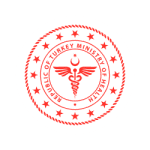What Are the Ways to Prevent Hair Transplant Infection?
No one wants to experience an infection after a hair transplant. To avoid this situation, you need to do the following;
- Perform your hair transplant procedure in a trusted, professional clinic, observing good hygiene practices.
- Follow the care instructions given to you by your surgeon meticulously.
- Take prescribed medication regularly if necessary.
- Avoid touching your wounds and make sure to wash your hands.
- Do not participate in any strenuous exercise or activity without your surgeon’s approval; wait until your surgeon says it is OK.
- Regularly attend the care appointments provided by your surgeon.
If you follow all these guidelines, your hair transplant will heal healthily without causing infection.
What are the Complications Following Hair Transplant Infections?
Unfortunately, an infected scalp can lead to a variety of other complications that can negatively affect your overall health and the success rate of your hair restoration surgery.
Folliculitis
Bacterial infection can cause inflammation of the hair follicles. This condition is called bacterial folliculitis. It usually appears as red bumps that appear a few weeks or months after surgery (but folliculitis is also a common scalp condition in people who have not had a hair transplant).
Folliculitis can also develop without infection; this is sterile folliculitis. If you suspect folliculitis, contact the hair transplant aftercare team. They can recommend a treatment to reduce inflammation and fight infection if necessary.
Necrosis
Necrosis is a type of tissue damage that can be caused by serious infections. Infection can increase the risk of ischemia, a condition that reduces blood flow to certain parts of the body. If the lack of blood flow persists, it can cause tissues to die. This condition is called necrosis.
When scalp tissue undergoes necrosis, it can look black and leathery. Since this condition is irreversible, the affected tissue may need to be removed by a surgeon. If you experience severe local pain after the hair transplant, ask the surgical team for help.
How Long Does Hair Transplantation Take to Heal?
The healing process after hair transplant surgery will begin as soon as you have completed your hair transplant procedure, but it may take several months before you can enjoy the full results.
Healing of the wounds and reduction of swelling or redness from the hair transplant usually takes place within 5-7 days. You may then notice that your transplanted hair falls out within 2 weeks after the surgery. This is called shock hair loss and is a completely natural part of the process.
Although the healing process is complete at this point, you may need to wait up to 4-5 months to see the final appearance of your new hair. Full hair transplant results can sometimes take as long as 18 months to complete.
Hair transplantation at Esteworld is performed by expert plastic surgeons. Our specialist doctors closely follow the developments in hair transplantation. Plans the hair transplantation process individually. Provides maintenance and follow-up care until permanent and natural results are achieved. You can contact us for detailed information about hair transplantation and the process.













